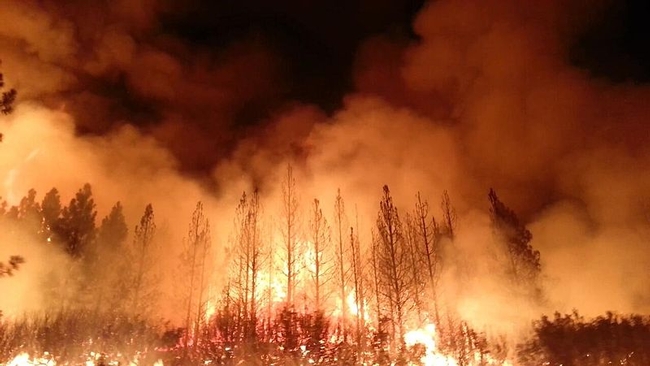Southern California is at risk for a giant fire, too
Responding to the giant fire that burned 39 homes and 70,000 acres in the Clear Lake area, Warren Olney of KCRW's Which Way LA asked a UC Agriculture and Natural Resources (UC ANR) fire expert in Southern California, "Could it happen here?"
"It happens here all the time," said Tom Scott, wildlife and urban interface UC ANR Cooperative Extension specialist in the Department of Environmental Science, Policy and Management at UC Berkeley. (Scott is based at UC Riverside.)
He said of the 50 major fires recorded on the CalFire website, 30 were in Southern California. "It will probably happen again."
Media outlets are reporting that the Rocky Fire in Northern California is burning so hot, it is creating its own weather. Scott said the phenomenon is less likely to occur in Southern California fires.
"A lot of times our fires are coupled with Santa Ana winds," he said. "You don't necessarily see the fire creating its own wind because winds are already blowing 50 or 60 miles per hour."
One thing that can lead to particularly hot fires in the LA area is the lack of summer rain.
"This creates a very dry environment in the summertime," Scott said. "Plants can dry down to a point where they ... are very low moisture, which makes them very flammable. The other thing is, our plants don't decompose. We have a lot of biomass hanging around for a long time, sometimes centuries. When that burns, there's a tremendous amount of fuel and it causes hot and quick-moving fires."
Clearing a defensible zone around homes in fire-prone areas is one way to reduce the risk that a house will burn down. But it takes a long-term concerted effort to manage the landscape to prevent fires from becoming major conflagrations that roar from the mountains to the sea, Scott said.
"One of the things that a lot of people imagine," he said, "is where we can get back to a point where the landscape has fires that are smaller, at a time (of year) when it's not as hot and we don't have Santa Ana winds."
In the meantime, people in fire-prone areas may consider putting their irreplaceable valuables in storage from April to November, he said.


